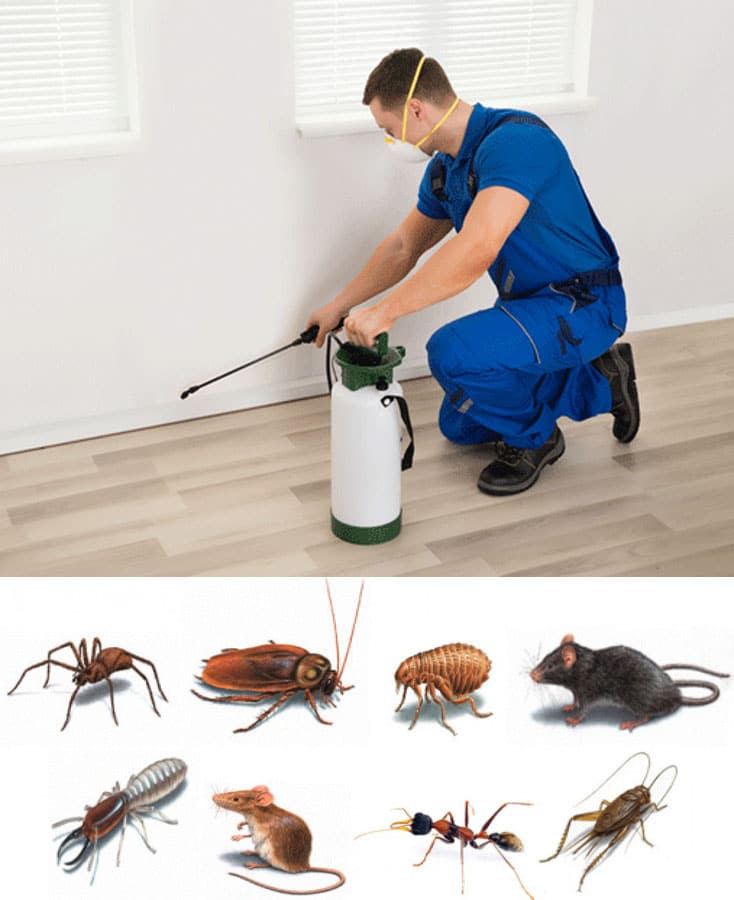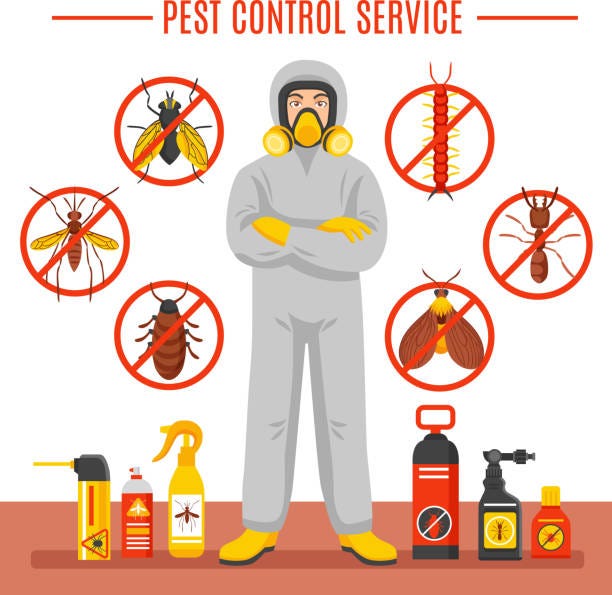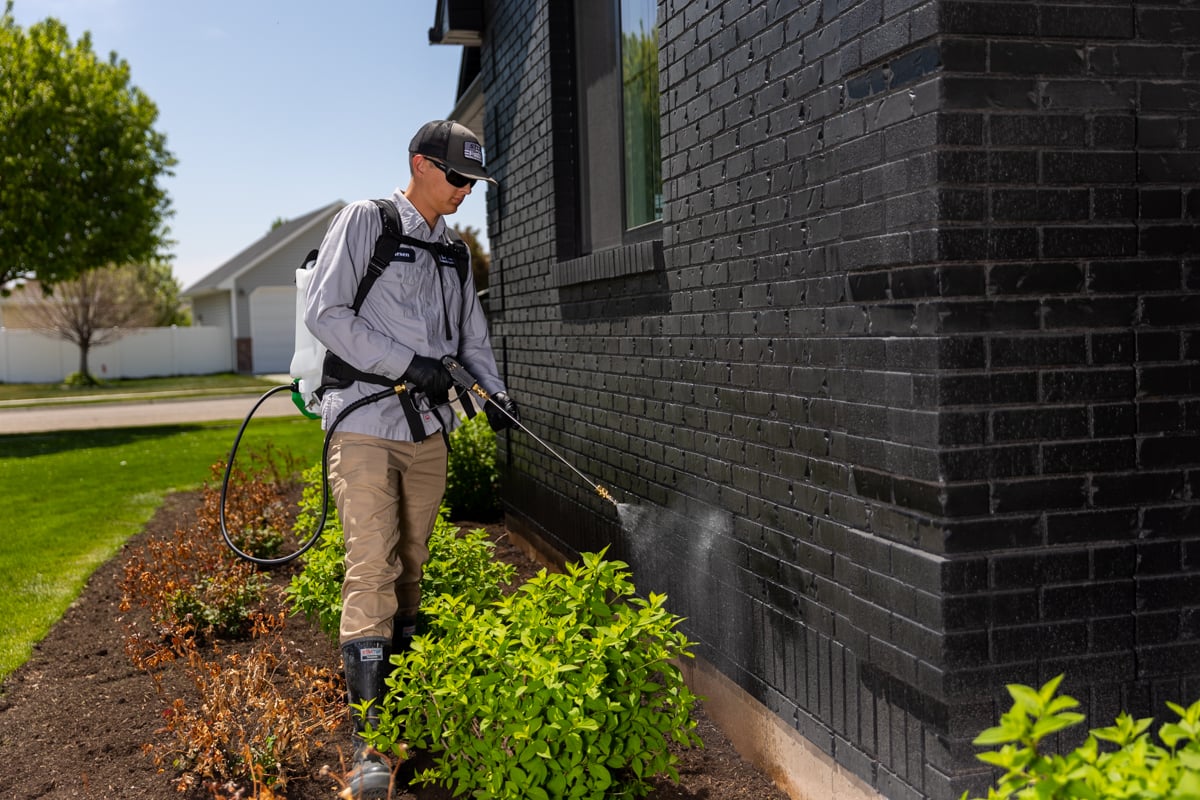Relied On A1 Exterminator Charlotte NC - Comprehensive Pest Solutions
Wiki Article
Discovering the very best Bed Pest Therapy Choices: An In-depth Comparison of Methods
When encountered with the relentless existence of bed pests, the look for effective treatment options comes to be critical. In the realm of pest control, the fight against these durable creatures needs a tactical method that thinks about various techniques. From chemical treatments to all-natural solutions, each alternative presents an one-of-a-kind set of advantages and limitations that demand cautious analysis. By delving into an in-depth contrast of these therapy approaches, a more clear understanding of the most efficient approach can be discerned.Chemical Therapies
One of the most commonly used insecticides for bed insect treatment is pyrethroid, which acts on the pests' nervous system, leading to paralysis and death. An additional reliable chemical alternative is neonicotinoids, which interrupt the bed pests' anxious system in a different manner, ultimately causing death.When utilizing chemical therapies for bed pest eradication, it is crucial to adhere to the instructions provided by the product label to ensure safety and security and effectiveness. Additionally, it is suggested to look for professional support when dealing with extreme invasions to properly examine the level of the problem and figure out the most suitable chemical therapy technique. While chemical services can be very reliable in removing bed bugs, it is necessary to take into consideration prospective dangers connected with their use and follow ideal techniques to lessen any kind of unfavorable impacts on human health and wellness and the atmosphere.
Heat Therapies
What duty does warmth play in the treatment of bed insect infestations? Warmth treatments have actually gained popularity as an efficient technique for getting rid of bed insects because of their safe nature and capability to get to concealed places where chemicals could not permeate. The process includes elevating the temperature of the infested area to degrees deadly to bed insects, commonly in between 117 ° F and 122 ° F, and keeping it for a sustained period, often several hours. This warm successfully kills bed pests in all phases of growth, consisting of nymphs, grownups, and eggs, making it an extensive service for invasions.One of the key advantages of heat treatments is their capacity to pass through deep into furnishings, wall surfaces, and other hard-to-reach locations where bed pests might hide. Unlike chemical treatments that require multiple applications and may leave residues, warmth treatments offer an one-time, chemical-free service that can be specifically appealing to those concerned about making use of pesticides in their home. Nevertheless, it is vital to ensure that the whole area gets to the called for temperature and that all bed insects are exposed to the heat to attain full obliteration.
Heavy Steam Treatments

In addition, steam therapies are environmentally friendly given that they utilize just water, removing the need for harsh chemicals. This makes rodent removal steam therapies a recommended choice for those looking for a much more eco-conscious and sustainable method to pest control. In addition, vapor therapies can be used on a variety of surfaces, consisting of bed mattress, furnishings, and carpetings, making it a functional remedy for treating bed bug invasions in different areas of a home or residential property. On the whole, steam therapies use a non-toxic, efficient, and complete technique for getting rid of bed bugs.
Freezing Treatments
Provided the efficiency of steam therapies in getting rid of bed bugs, an additional feasible method to take into consideration for combating these bugs is through the use of freezing therapies. Freezing treatments, additionally known as cryonite or cold therapies, include making use of severe cool temperature levels to eliminate bed insects and their eggs. This method is efficient since it causes ice crystals to develop within the bed pests' cells, resulting in their fatality.One of the major benefits of cold treatments is that they do not involve the use of any chemicals, making them a safe and eco friendly option for insect control - A1 charlotte pest control companies. In addition, freezing therapies can penetrate deep into splits and holes where bed bugs conceal, ensuring that infestations are extensively eradicated
Nevertheless, it is vital to note that cold therapies might take longer to accomplish total eradication compared to various other methods like steam his response therapies. Moreover, freezing therapies might not appropriate for all scenarios, as they require specialized tools and experience to be reliable. In general, freezing treatments can be an important addition to a detailed bed insect therapy plan, specifically when made use of in combination with other control methods.

Natural Remedies
When thinking about insect control methods for bed pests, checking out all-natural remedies can supply a eco-friendly and non-toxic technique to resolving infestations. A1 bed bug treatment in charlotte. All-natural solutions often involve the usage of substances such as crucial oils, diatomaceous planet, and heavy steam to battle bed pest invasions without the use of rough chemicalsImportant oils like lavender, tea tree, and pepper mint have been recognized for their insect-repelling buildings and can be diluted and sprayed around infested locations to discourage bed insects. Diatomaceous earth, a great powder made from fossilized algae, works by drying out and eventually killing bed pests upon call. Steam therapies are another efficient natural remedy, as the high temperature levels can get rid of bed bugs in all stages of their life cycle.
While natural treatments can be a much safer alternative for homes with pets, people, or youngsters conscious chemicals, it is important to note that they might call for more regular application and persistance to totally get rid of bed bug problems.
Conclusion
Finally, numerous treatment choices exist for bed bug infestations, each with its very own benefits and limitations. Chemical therapies work yet may present health and wellness dangers. Warm treatments can be expensive but offer thorough removal. Heavy steam treatments offer a non-toxic choice. Freezing therapies work however may require several Get More Information applications. Natural solutions can be a more secure choice yet may not be as potent. It is crucial to consider the particular requirements and conditions of each scenario when choosing a treatment method.Unlike chemical treatments that require multiple applications and may leave residues, warmth therapies offer an one-time, chemical-free solution that can be specifically appealing to those worried about the use of pesticides in their living areas. Unlike some chemical therapies, vapor therapies do not leave behind unsafe residues, making them a much safer choice, especially in environments where chemical pesticide usage is a problem, such as homes with youngsters or family pets.

Report this wiki page